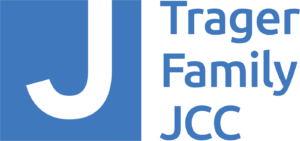At the Dallas memorial service, President Obama called upon us all to come together with an open heart to bridge the divides in our nation – “to join … sides to do right. … [to] decide to come together and make our country reflect the good inside us, the hopes and simple dreams we share. … For all of us, life presents challenges and suffering. Accidents, illnesses, the loss of loved ones; there are times when we are overwhelmed by sudden calamity, natural or man-made. … Our character is not found in isolation. Hope does not arise by putting our fellow man down. It is found by lifting others up.”
These words are powerful reminders of the task before each of us, as citizens and as Jews, to do our part to work for peace and tikkun olam (the healing of the world). On the evening of Saturday, August 13, the Jewish community will mark Tisha b’Av, a day of mourning and memory, when we recall the destruction of the ancient biblical temple.
Tradition teaches that it was destroyed due to sinaat chinam (free and baseless hatred), and as such, we are commanded to take this day to remember the devastating consequences that are possible when we do not ground our actions in love. On this day, we are reminded to work toward a day when this world will be filled with ahavat chinam (free and baseless love).
Sadly, in 2016, it is only too clear that we, human beings, have yet to have succeeded in our capacity to fill this world with ahavat chinam. Too often, we – as individuals, groups and even nations – still function as if putting others down is the only way that we can be lifted up. Consequently, the plague of violence and destruction continues to hover over the face of the earth, and none of us are immune.
Human beings often react in self-defense to things that scare them, trying to create distance by responding with judgment to catastrophe – seeking to label, categorize and assign cause and consequence to events that terrify by their seemingly random nature. “What did she do to deserve X?” one might wonder to one’s self. Unfortunately, such fear-based responses only exacerbate fear. The more isolated we are from one another, the more likely it is that violence and hatred will spring forth from the vaccum that we create when we let our fears rule us.
To interrupt the cycle of violence, we need to work to lift each other up. I draw comfort in knowing that the work that we are doing at KentuckyOne Health is guided by these very principles. For example, our support of the Bounce coalition with the Jefferson County Public Schools works to intervene with young students who have had adverse childhood experiences, in order to minimize their long term impact on their ability to thrive physically, emotionally and socially.
This program provides support and resources to students and school professionals, to create a compassionate and nonjudgmental learning environment where students can expand their coping skills in order to bounce back from devastating and traumatic experiences that might have otherwise altered the course of their lives forever.
Our Pivot to Peace initiative is another example of the work that we are trying to do to interrupt the cycle of violence by not only treating the physical wounds of victims of gunshot violence, but also the underlying issues, working to provide a year of counseling and support.
It may take a while for the seeds of love and peace to begin to blossom, but in a world when it is difficult to hold on to hope, I am comforted to know that we are working in innovative and compassionate ways to transform our community, building bridges where so many would rather build walls. It is my sincere prayer that the time will soon come when all of us will learn to see beyond the symptoms of trauma to the potential for healing and hope.
May the day come soon when fear will no longer make us doubt one another, and where we can recognize that we are stronger together, united in our commitment to join together, with an open heart, to do right and work for a world at peace.


